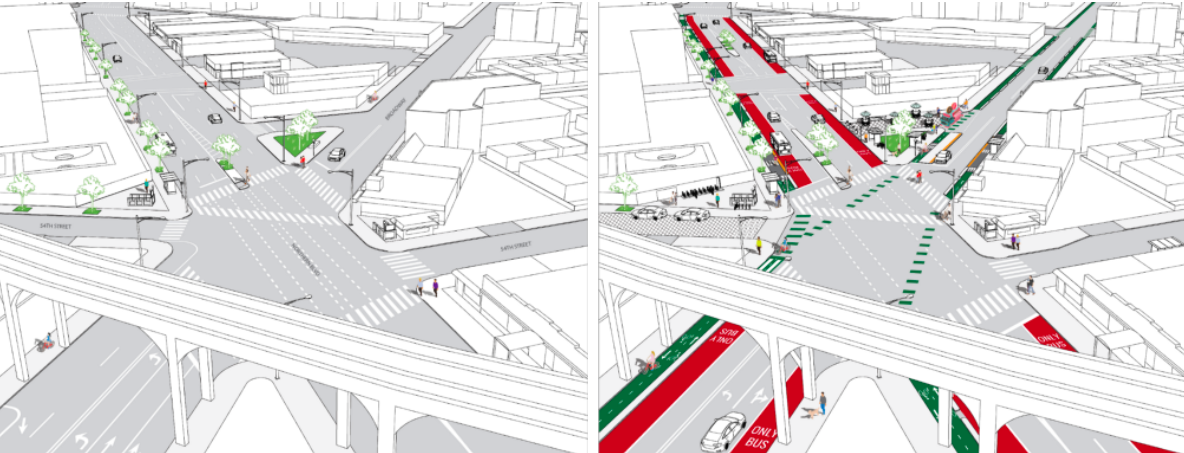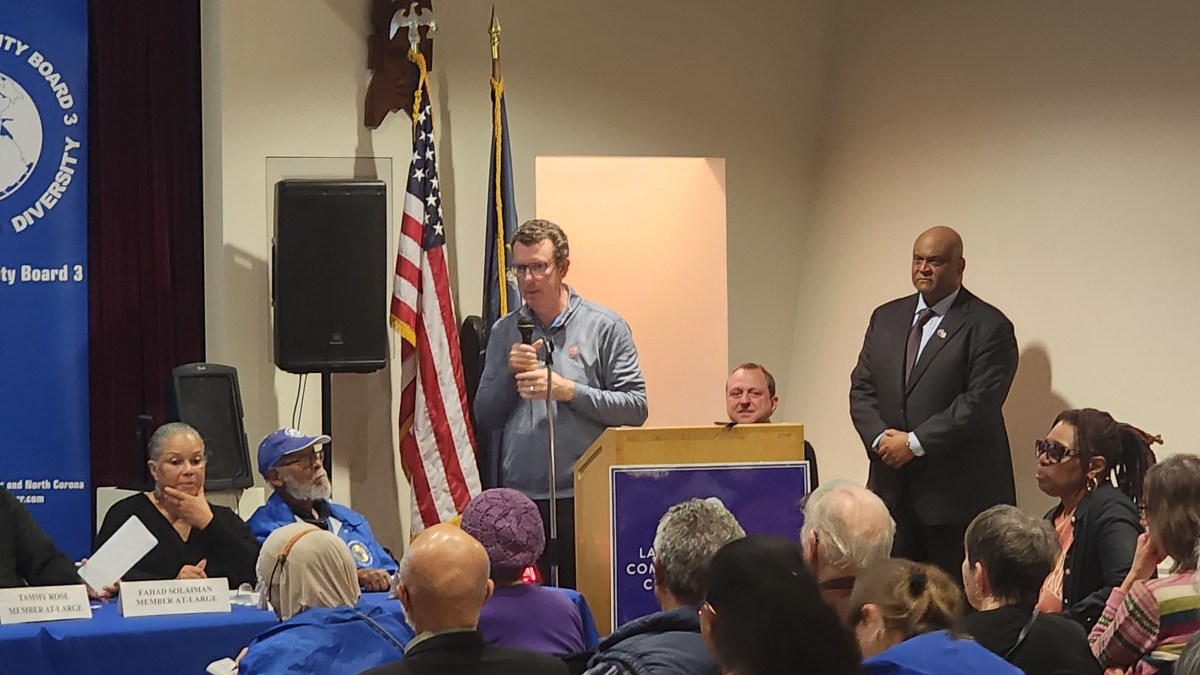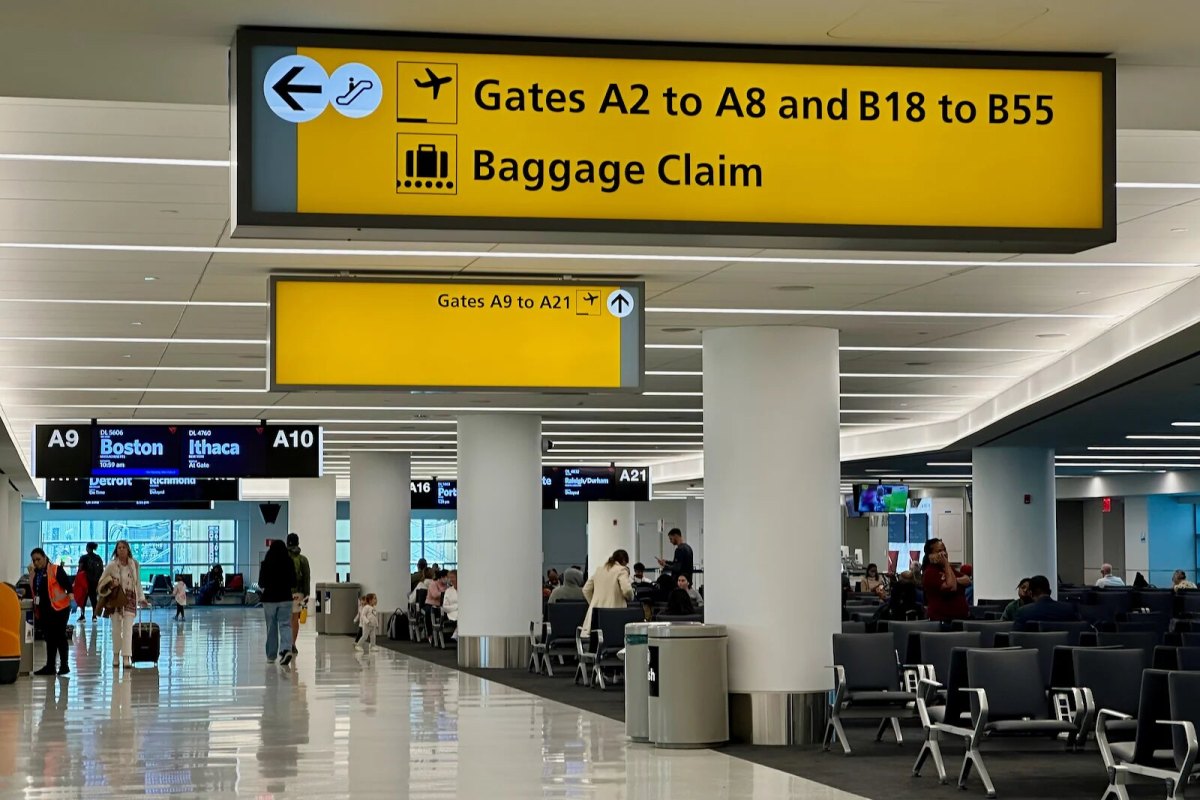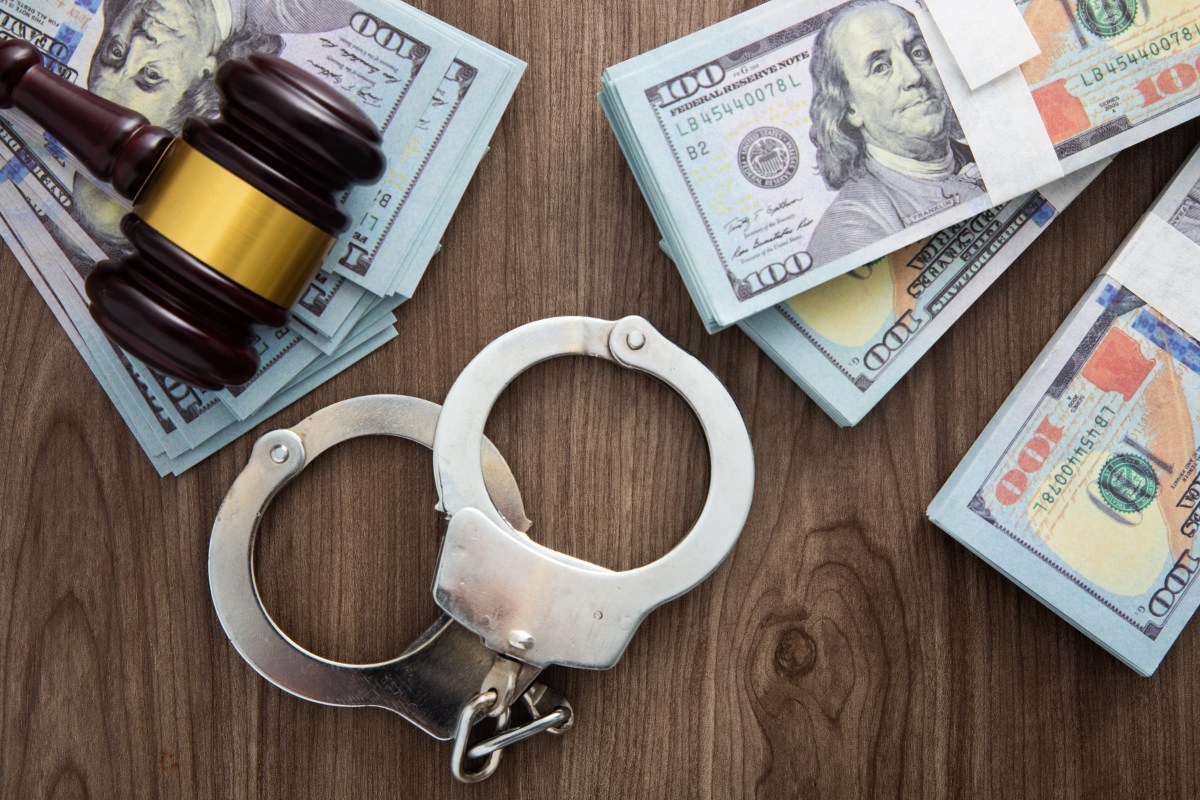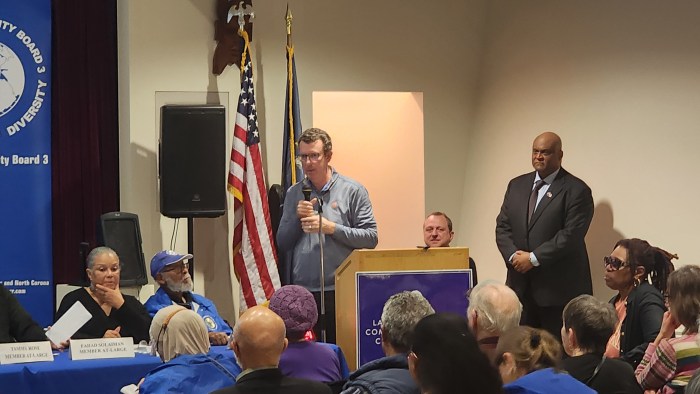As New Yorkers have displayed a hesitancy to get back on the subway with lingering COVID-19 concerns, Lyft has come up with an engineering plan for streets that will give cyclists and scooters space to safely move.
The outline set forth in Lyft’s Resilient Streets initiative, developed by urban design firm Street Plans and transportation engineering firm Sam Schwartz Engineering, prioritizes bus and bike lanes and is dependent on one long shot: federal funding for local governments.
Despite this, Lyft includes three case studies one of which focusing on Queens, anticipating a major surge of vehicular traffic despite mass transit not being a proven vector for the spread of COVID-19. Other attributes of the resiliency plan include changes Lyft and bikeshare apps to surface “Slow Streets” or “Open Streets,” and a push for federal lawmakers to pass the Bicycle Commuter Act, among other bills.
“The pandemic has created a transportation inflection point for our cities: do we stick to the status quo or do we make it possible to easily and safely get around without owning a car?” Caroline Samponaro, the head of Micromobility Policy at Lyft, said. “Micromobility has proven itself to be a core part of creating a resilient transportation system in our cities, but sustaining the boom will require a dramatic reimagining of our streets. To support resilient cities, we need to create resilient streets.”
Lyft’s recommendations for New York City focus on 34th Avenue, Broadway, and Northern Boulevard in Queens to offer cyclists links to the Queensborough Bridge to Manhattan. These areas have seen an increase in bicycle crowding.
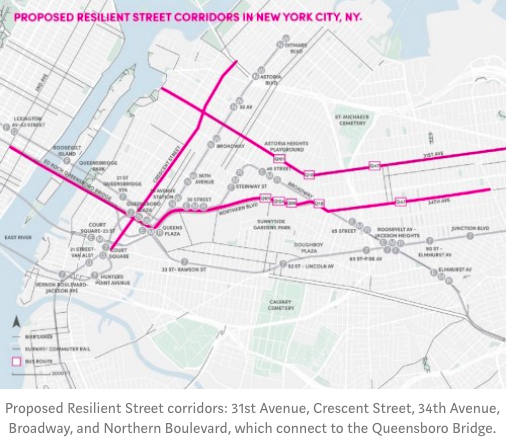
A dedicated bus lane along Northern Boulevard as well as a protected bike lane, namely in Woodside and Sunnyside, which would improve safety and congestion on what has been called the “new boulevard of death” after Queens Boulevard lost the title to sweeping improvements centered around pedestrian and cyclist safety as well as traffic calming measures. The tricky six-pointed star intersection of Northern Boulevard, 54th Street and Broadway were of interest in the case study.
Read the full proposal for Queens here.
While the MTA struggles to lure riders back to trains and buses which haven not recovered since ridership losses surpassed 90%, Lyft has seen a steady increase in bike-share users. In 2020, CitiBike saw 500,000 new users and over 103,000 rides on Sept. 12 alone. Earlier in September, city Department of Transportation Commissioner Polly Trottenberg said they had logged a 57& increase in cycling since the pandemic began.
The MTA’s financial loss came quickly after New York went into lockdown and received $3.9 billion from the federal government in the CARES Act. Additional stimulus bills since then have failed while state and local governments continue to grapple decimated coffers. The transit agency alone says $12 billion will help them stave off layoffs, a 40% cut to services and a $1 fare increase.



